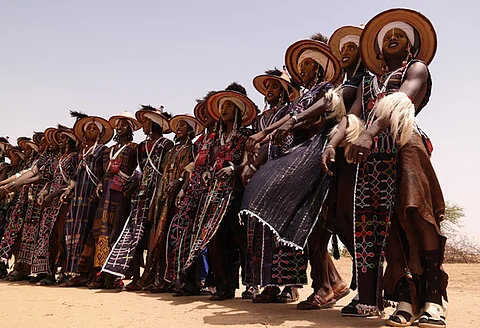

The Fulani, one of Africa’s largest pastoral populations, have a history going back to the ‘Green Sahara’ period (12,000–5,000 years before the present), a new study has found.
The research has also found that the Fulani have been shaped by historical migrations and have a complex genetic history with influences from both North and West African groups.
The findings are significant as the Fulani number 40 million people and are spread from the Atlantic coast of West Africa to Lake Chad in Central Africa, as per a statement by the University of Uppsala.
Till now, the ancestral history of the Fulani has been a mystery given that most live a nomadic lifestyle and use temporary camps or mobile tents, which do not leave traceable archaeological evidence.
The researchers conducted the study in seven African countries spread across the Sahel, the band of scrublands south of the Sahara and north of the green savannah of Central Africa.
In collaboration with Fulani communities and local researchers, they collected biological samples and anthropological information from over 460 Fulani participants across 18 locations in Africa.
“Our analysis revealed genetic differences between local Fulani populations following a west-east cline, highlighting their complex genetic history, which was shaped by interactions with different local groups and various demographic events,” the statement quoted Mame Yoro Diallo, a PhD candidate from Charles University in Prague, who was involved in the study.
They also found a genetic component closely associated with all studied Fulani populations. This, according to the statement, suggested a shared ancestral component possibly linked to the beginning of African pastoralism during the Green Sahara period, 12,000-5,000 years before the present.
“Comparisons between genetic data of Fulani and ancient individuals identified the presence of a genetic component in all Fulani populations associated with ancient groups from North Africa, providing additional insights into their deep genetic history and ancient contacts, particularly with ancient groups related with modern Moroccan populations such as the Berber,” said Carina Schlebusch, an evolutionary geneticist at Uppsala University and senior author of the study.
Fulani populations also showed genetic contributions from other African groups belonging to western, central and eastern sub-Saharan Africa.
“During the last 500 years, the trans-Saharan trade could also have played a pivotal role in facilitating the development of extensive trade networks for the Fulani, further allowing the spread of pastoralism in Africa in different directions across the Sahel belt and beyond,” says Schlebusch.
Population history and admixture of the Fulani people from the Sahel has been published in The American Journal of Human Genetics.